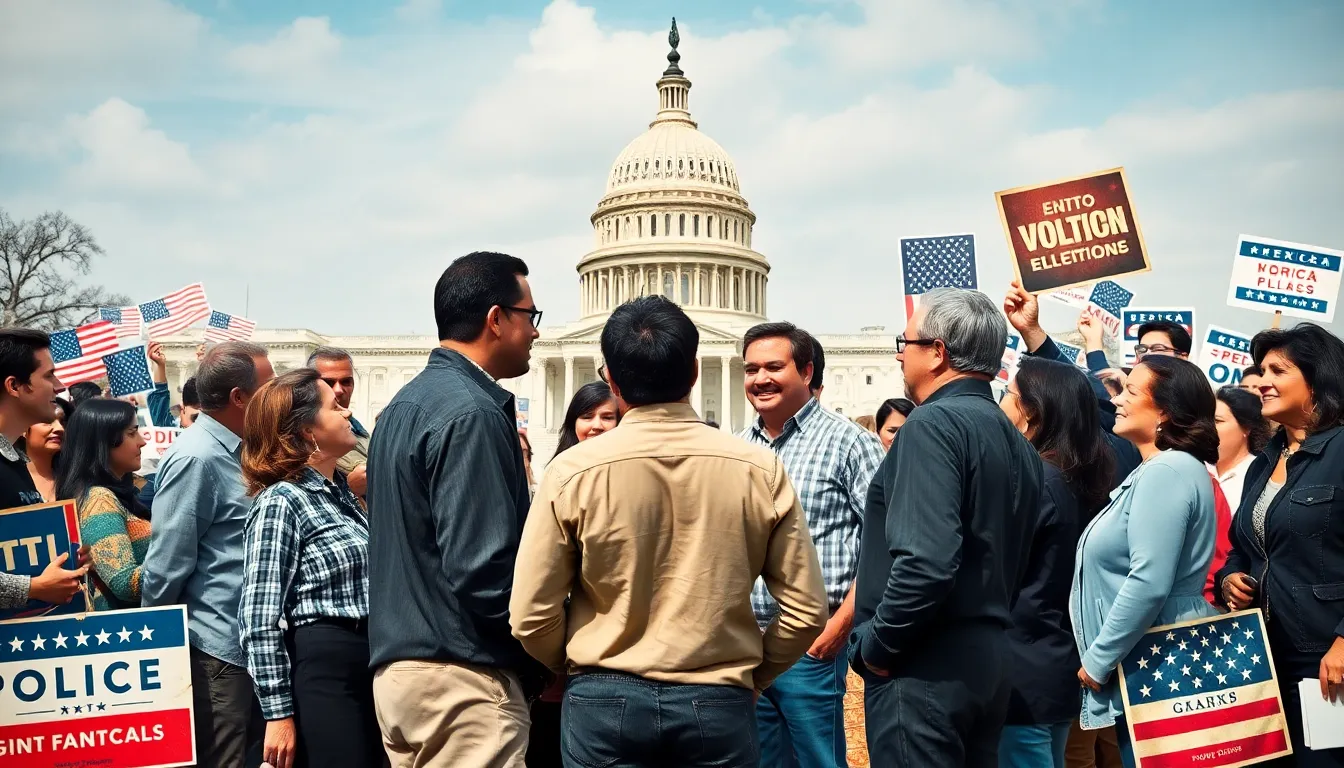In a world where political debates can feel like a reality TV show, understanding the political landscape is more crucial than ever. From the latest tweets to heated town hall meetings, the dynamics of power and influence shape everyday life. It’s not just about who’s winning or losing; it’s about how these shifts impact the way people live, work, and play.
Navigating this intricate web of alliances, rivalries, and policies can be as tricky as finding a unicorn in a haystack. Yet, staying informed doesn’t have to be a chore. With a bit of humor and a dash of insight, anyone can grasp the pulse of political currents. Buckle up as we dive into the ever-evolving world of politics, where the stakes are high and the drama is real.
Table of Contents
ToggleUnderstanding The Political Landscape
Grasping the political landscape is vital for navigating today’s intricate societal dynamics. Policies and power struggles influence everyday experiences, making awareness essential.
Definition And Importance
The political landscape refers to the array of political entities, ideologies, and institutions present in a given region. It’s crucial because this landscape shapes public policy, governance, and community interactions. Understanding these elements helps individuals assess how decisions impact their lives. Engaging with the political sphere fosters informed citizenship and empowers collective action. Without awareness, people may overlook opportunities to advocate for change or support initiatives that align with their values.
Key Components Of The Political Landscape
Several key components define the political landscape. Political parties play a central role, influencing candidate selection and policy agendas. Ideologies contribute to shaping voter opinions and defining party platforms. Institutions, such as legislatures and courts, oversee governance and the implementation of laws. Interest groups advocate for specific issues, mobilizing public opinion and affecting legislative outcomes. Media outlets also shape perceptions, offering insights into political events and trends. Understanding these components enables individuals to navigate the complexities of political engagement more effectively.
Historical Context Of Political Landscape


Understanding the historical context of the political landscape reveals how past decisions shape contemporary politics. Key events and influences illustrate the development of political systems and ideologies over time.
Evolution Over The Decades
Political landscapes evolve through shifting ideologies and societal changes. The 20th century witnessed the rise of global ideologies, including socialism, conservatism, and liberalism. Political parties adapted to new voter demographics, illustrating responsiveness to social movements. The latter part of the century saw significant political realignment, particularly in the United States. Electoral trends shifted as demographic changes influenced party platforms. Increasingly, the 21st century has highlighted polarization and the role of digital media in shaping political discourse.
Major Events That Shaped The Landscape
Several pivotal events significantly impacted the political landscape. The Civil Rights Movement from the 1950s to the 1960s fundamentally transformed political engagement and voter access. Watergate scandal in the 1970s severely undermined trust in government institutions. The fall of the Berlin Wall in 1989 marked the end of Cold War divisions, reshaping global political alliances. The September 11 attacks in 2001 initiated a new focus on national security policies, altering American politics. Each of these events influenced party dynamics and shaped policy priorities, illustrating the importance of historical context in understanding current political realities.
Current Trends In The Political Landscape
Current political trends reflect dynamic changes shaping governance and public policy. Understanding these shifts involves examining various emerging movements and the influence of technology.
Emerging Political Movements
Emerging political movements significantly impact the political landscape today. Activism surrounding climate change mobilizes young voters, attracting attention to environmental issues. Additionally, movements advocating for social justice are reshaping priorities among legislators, emphasizing equitable policies. The rise of grassroots organizations demonstrates a shift toward localized engagement, fostering community-driven initiatives. Advocacy for systemic reforms reflects public dissatisfaction and the demand for accountability. These movements often intersect, forming coalitions that amplify their voices, creating a powerful wave of change. Voter engagement spikes during critical elections, driven by these grassroots efforts.
Role Of Technology And Social Media
Technology and social media play crucial roles in the contemporary political landscape. Social media platforms serve as primary sources of information, shaping narratives and public opinions. Algorithms influence visibility, affecting which political messages reach audiences. Online campaigning strategies leverage data analysis, enabling targeted outreach to specific demographic groups. Moreover, these platforms facilitate real-time communication, allowing direct interaction between politicians and constituents. Misinformation spreads rapidly, posing challenges for informed decision-making. Nevertheless, many activists harness these technologies to organize movements and raise awareness on key issues. Enhanced connectivity fosters a more engaged electorate, encouraging broader participation in the political process.
The Impact Of The Political Landscape On Society
Political landscapes significantly shape society. Policies and governance reflect the priorities of political entities and influence citizen experiences and expectations.
Influence On Governance And Policy
Political entities, like parties and interest groups, directly affect governance. They advocate for specific policies that impact daily life, from healthcare to education. Legislative priorities shift based on the prevailing political atmosphere, responding to public demands and pressures. Significant influences include social movements, like those advocating for climate action and social justice. Grassroots initiatives often lead to policy reforms that address local community needs. The impact of these movements illustrates how civic engagement drives government responsiveness.
Public Perception And Engagement
Public perception of political events shapes societal engagement. Citizens often turn to media to gather information and form opinions. Trust in institutions varies based on current political dynamics and historical events. When political scandals arise, they can significantly erode trust and dampen civic participation. Increased use of digital platforms facilitates debate and mobilizes community engagement, especially among younger voters. As activism grows, the public’s role in influencing governance becomes more pronounced. The current political landscape fosters dialogue, enabling voters to advocate for change actively.
The political landscape is a dynamic arena where understanding its nuances is essential for active participation. As individuals navigate this complex environment they empower themselves to influence change. Recognizing the interplay of various entities and ideologies allows for informed engagement in civic matters.
With emerging movements and technological advancements reshaping the dialogue it’s clear that staying informed is more important than ever. This awareness not only fosters personal growth but also strengthens communities and drives collective action. Ultimately, engaging with the political landscape is crucial for shaping a future that reflects the values and priorities of society.





